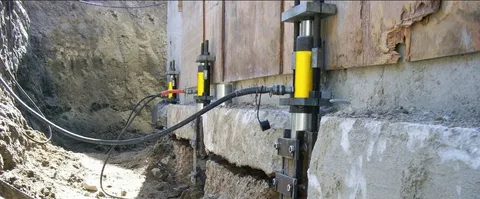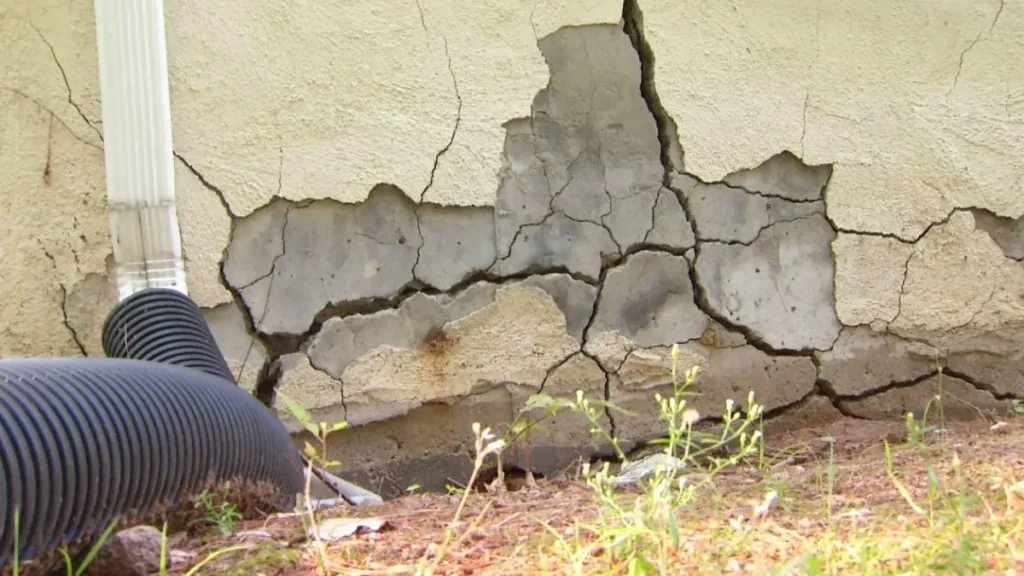So your home’s foundation has finally been repaired. GREAT NEWS! That means the cracks and uneven floors are now taken care of. Here is the thing: your job does not end after the repair is done. It is the same as a car needs regular oil changes. Your substructure also needs a little attention to stay strong. Oof, right?
At All Star Foundation Repair, we have seen it all. Beautifully repaired homes that stay solid for decades. We have also seen others run into trouble again because maintenance steps were skipped. The good news? Taking care of your base is not hard at all.
What Are The Basics of Residential Foundations?
We should know what our homes are made of. To keep them safe. To maintain the repair. Most houses have one of these two main types:
- Concrete Slab: Imagine a thick piece of concrete that your house sits directly on top of. It is like a poured in place floor. That’s a slab!
- Raised Foundation: This type has short walls that lift the first floor of the house up a little bit. This creates a small space underneath. People sometimes call a crawl space.
Maintenance Guide for Homeowners
- Watch Your Drainage
If there’s one thing that can hurt your foundation, it is water. The soil expands when too much water collects around your home. It puts pressure on the foundation walls. If the soil gets too dry, it can shrink. It creates gaps that cause shifting.
Here is what you can do:
- Keep downspouts and gutters clean: If your gutters are clogged, it can cause rainwater to pour directly onto the ground near your house. It leads to puddles.
- Extend your downspouts: You have to ensure that you are draining the water. At least 5 to 10 feet away from your home will do the job.
- Your yard’s slope: Your yard should gently slope away from your house. Water should flow out, not in. A little yard work can go a long way.
- Keep the Soil Moist
The soil around your foundation needs to stay balanced. The ground can pull away from your foundation if it becomes too dry. It creates gaps. That causes settling. But the soil swells when it is TOO moist. This can too put stress on your foundation walls.
QUICK FIX:
Use a sprinkler during hot months. It will keep the soil evenly moist. Avoid soaking it. Think of it like watering a plant: a little at a time, consistently, works best.
- Look Out for New Cracks
It is only smart to keep an eye on your foundation. Small cracks can happen over time. No worries in that case! But big ones may need attention.
Okay, so once every month instead of going for a walk outside, walk inside your home. Look for:
- New cracks in the walls. They would be pretty visible.
- Windows that suddenly start sticking. Doors can do this as well.
- Gaps around ceiling corners. Sometimes, door frames.
You notice any of these? In your home? Don’t panic! Just call All Star Foundation Repair. We can catch issues early.
- Avoid Planting Too Close to Your House
We know you are a plant person. Sure your plants look great around your home. Beware, their roots can be sneaky troublemakers. Tree roots can grow deep and wide. They can absorb moisture from the soil under your foundation. It will cause them to shift.
You can still plant, don’t be sad. Just remember these simple rules.
- Small plants and shrubs: Always keep them at least 2-3 feet away from your home.
- Large trees: Plant them but at least 10-15 feet away.
- Evil Plumbing Leaks
Leaky pipes can silently damage your foundation. Water from a small leak can soften the soil. It will take time but it will create weak spots.
Quick Reminders:
- Be sure to check your water bill regularly. For unexplained increases.
- Do not ignore the damp spots in your basement.
- Do NOT procrastinate to have your plumbing inspected. If, of course, you find hidden leaks.
- Maintain Proper Landscaping
Your landscaping can help OR hurt your foundation.
- Please avoid piling mulch or flower beds too high against your home’s walls. This traps moisture. Insects or mold’s favorite thing.
- Keep at least a few inches of your foundation wall visible above the soil line. It needs to “breathe.”
- Consider how your water flow is affected if you’re adding new landscaping.
- Regular Foundation Inspections
Your foundation needs regular professional inspections. Just like going to the doctor for a check up. Inspection by our experts can look into early warning signs before they become serious.
Conclusion
Your home’s foundation is its backbone. It holds everything together. A little attention can keep it strong for decades. You are doing the best thing for your home’s health by managing water, keeping soil balanced, watching for cracks, and scheduling regular check ups.
At All Star Foundation Repair, we are always ready to help you keep your home solid and worry free. Our team is just a call away, whether you need an inspection, advice, or a quick repair. Remember: small steps today can prevent big problems tomorrow
FAQs
- What are some tips for protecting your home from foundation repair?
The rule is to keep the ground around your foundation (about 10 feet out) dry. Too much water soaking the soil or washing it away are the biggest reasons foundations get damaged.
- What type of cement is used to repair foundations?
The best cement types are hydraulic cement for small cracks. Portland cement for structural repairs. Polymer-modified cement for added flexibility and water resistance.
- Can you live in a house during foundation repair?
Yes, it is possible to live in a house during foundation repair. But it also depends on the extent of the damage and the type of work being done.
- How long does foundation repair take?
Foundation repair can take anywhere from a few days to several weeks. It mostly depends on the complexity of the issue. Call us for our expert opinion and get an estimated timeline.
- How long do foundation crack repairs last?
A good crack repair can last for many years, maybe even decades. If you fix the main problem that caused the crack in the first place. How long it lasts depends on the repair method. Some last 5-10 years and some last a lot longer!


